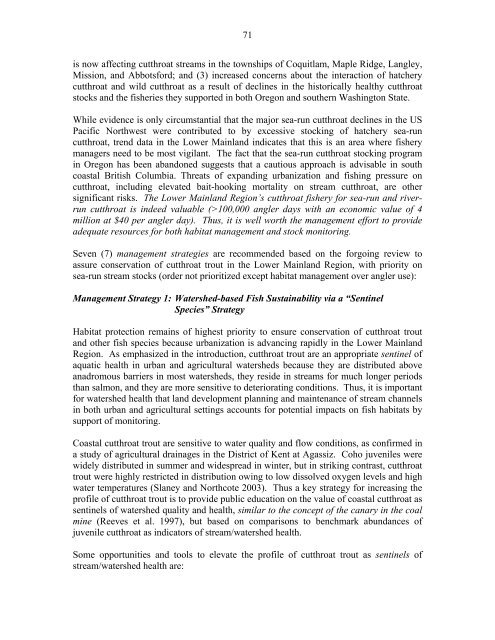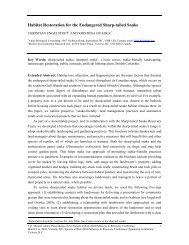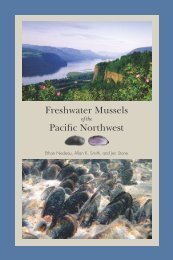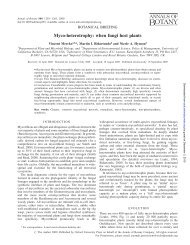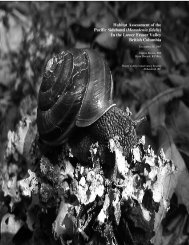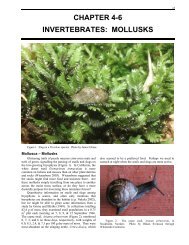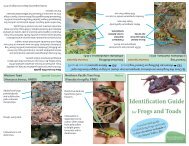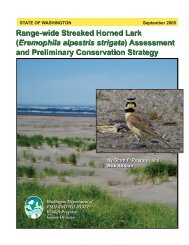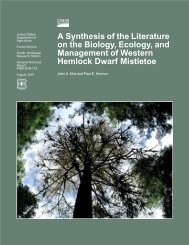Coastal Cutthroat Trout as Sentinels of Lower Mainland Watershed ...
Coastal Cutthroat Trout as Sentinels of Lower Mainland Watershed ...
Coastal Cutthroat Trout as Sentinels of Lower Mainland Watershed ...
Create successful ePaper yourself
Turn your PDF publications into a flip-book with our unique Google optimized e-Paper software.
71is now affecting cutthroat streams in the townships <strong>of</strong> Coquitlam, Maple Ridge, Langley,Mission, and Abbotsford; and (3) incre<strong>as</strong>ed concerns about the interaction <strong>of</strong> hatcherycutthroat and wild cutthroat <strong>as</strong> a result <strong>of</strong> declines in the historically healthy cutthroatstocks and the fisheries they supported in both Oregon and southern W<strong>as</strong>hington State.While evidence is only circumstantial that the major sea-run cutthroat declines in the USPacific Northwest were contributed to by excessive stocking <strong>of</strong> hatchery sea-runcutthroat, trend data in the <strong>Lower</strong> <strong>Mainland</strong> indicates that this is an area where fisherymanagers need to be most vigilant. The fact that the sea-run cutthroat stocking programin Oregon h<strong>as</strong> been abandoned suggests that a cautious approach is advisable in southco<strong>as</strong>tal British Columbia. Threats <strong>of</strong> expanding urbanization and fishing pressure oncutthroat, including elevated bait-hooking mortality on stream cutthroat, are othersignificant risks. The <strong>Lower</strong> <strong>Mainland</strong> Region’s cutthroat fishery for sea-run and riverruncutthroat is indeed valuable (>100,000 angler days with an economic value <strong>of</strong> 4million at $40 per angler day). Thus, it is well worth the management effort to provideadequate resources for both habitat management and stock monitoring.Seven (7) management strategies are recommended b<strong>as</strong>ed on the forgoing review to<strong>as</strong>sure conservation <strong>of</strong> cutthroat trout in the <strong>Lower</strong> <strong>Mainland</strong> Region, with priority onsea-run stream stocks (order not prioritized except habitat management over angler use):Management Strategy 1: <strong>Watershed</strong>-b<strong>as</strong>ed Fish Sustainability via a “SentinelSpecies” StrategyHabitat protection remains <strong>of</strong> highest priority to ensure conservation <strong>of</strong> cutthroat troutand other fish species because urbanization is advancing rapidly in the <strong>Lower</strong> <strong>Mainland</strong>Region. As emph<strong>as</strong>ized in the introduction, cutthroat trout are an appropriate sentinel <strong>of</strong>aquatic health in urban and agricultural watersheds because they are distributed aboveanadromous barriers in most watersheds, they reside in streams for much longer periodsthan salmon, and they are more sensitive to deteriorating conditions. Thus, it is importantfor watershed health that land development planning and maintenance <strong>of</strong> stream channelsin both urban and agricultural settings accounts for potential impacts on fish habitats bysupport <strong>of</strong> monitoring.<strong>Co<strong>as</strong>tal</strong> cutthroat trout are sensitive to water quality and flow conditions, <strong>as</strong> confirmed ina study <strong>of</strong> agricultural drainages in the District <strong>of</strong> Kent at Ag<strong>as</strong>siz. Coho juveniles werewidely distributed in summer and widespread in winter, but in striking contr<strong>as</strong>t, cutthroattrout were highly restricted in distribution owing to low dissolved oxygen levels and highwater temperatures (Slaney and Northcote 2003). Thus a key strategy for incre<strong>as</strong>ing thepr<strong>of</strong>ile <strong>of</strong> cutthroat trout is to provide public education on the value <strong>of</strong> co<strong>as</strong>tal cutthroat <strong>as</strong>sentinels <strong>of</strong> watershed quality and health, similar to the concept <strong>of</strong> the canary in the coalmine (Reeves et al. 1997), but b<strong>as</strong>ed on comparisons to benchmark abundances <strong>of</strong>juvenile cutthroat <strong>as</strong> indicators <strong>of</strong> stream/watershed health.Some opportunities and tools to elevate the pr<strong>of</strong>ile <strong>of</strong> cutthroat trout <strong>as</strong> sentinels <strong>of</strong>stream/watershed health are:


